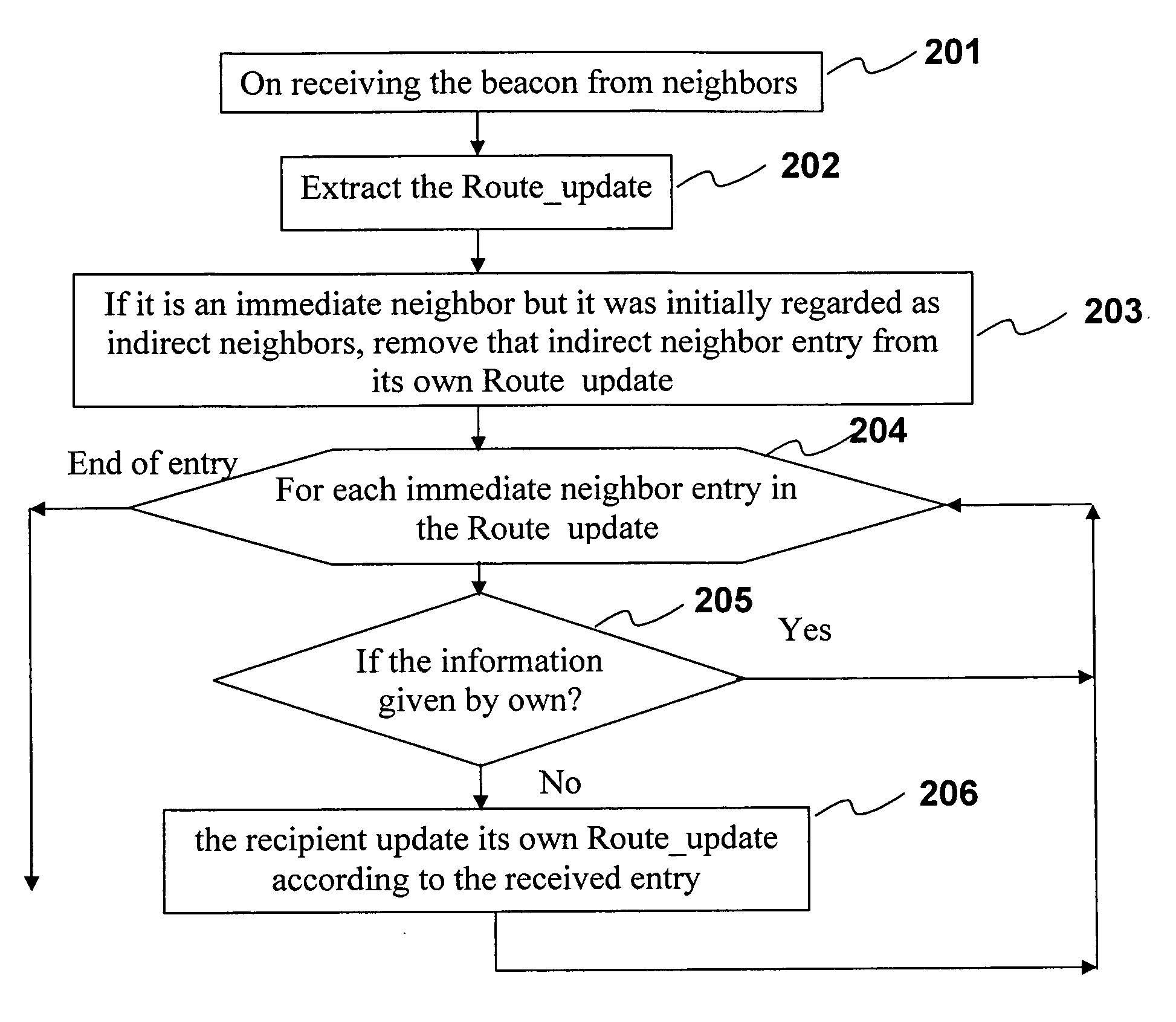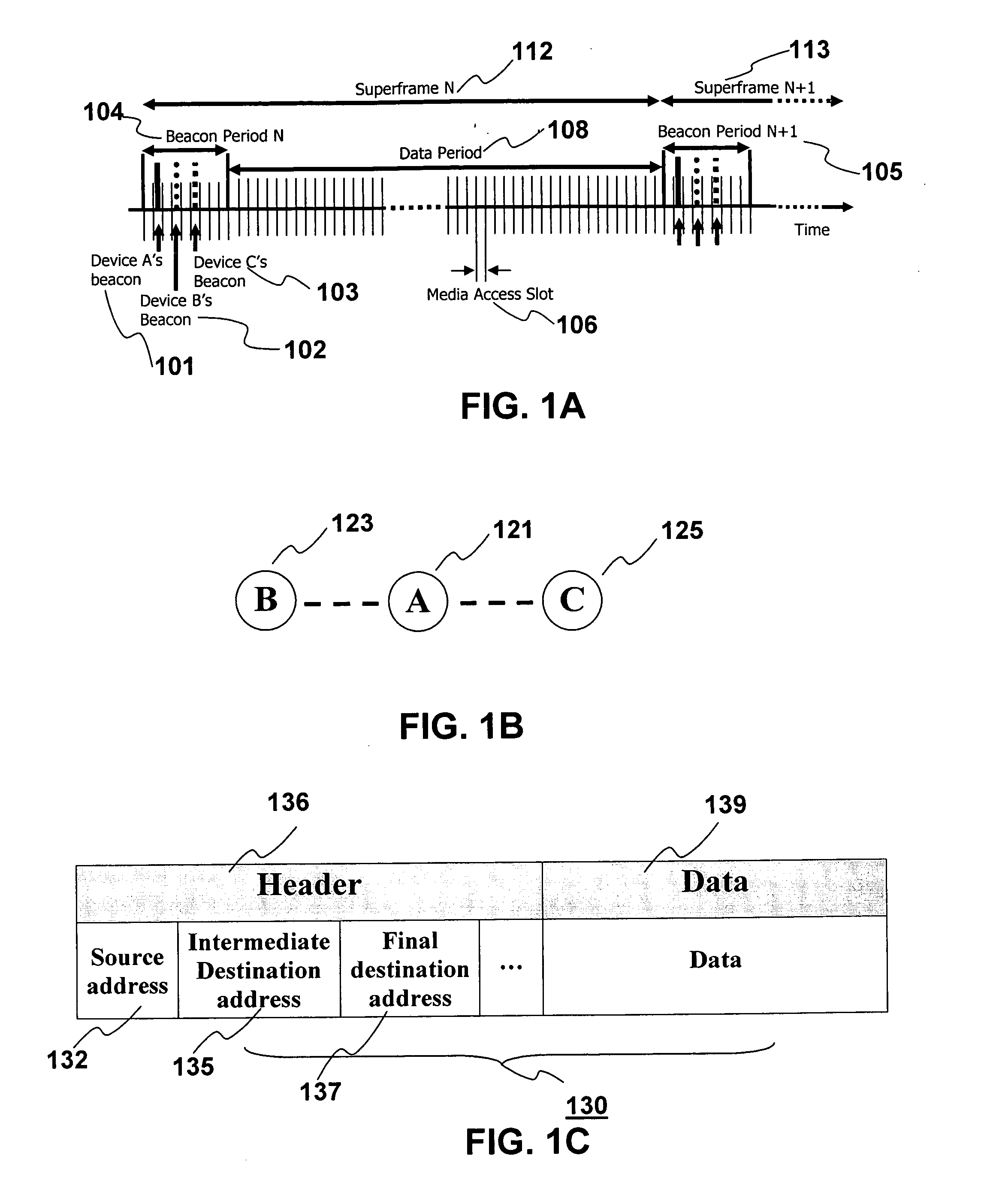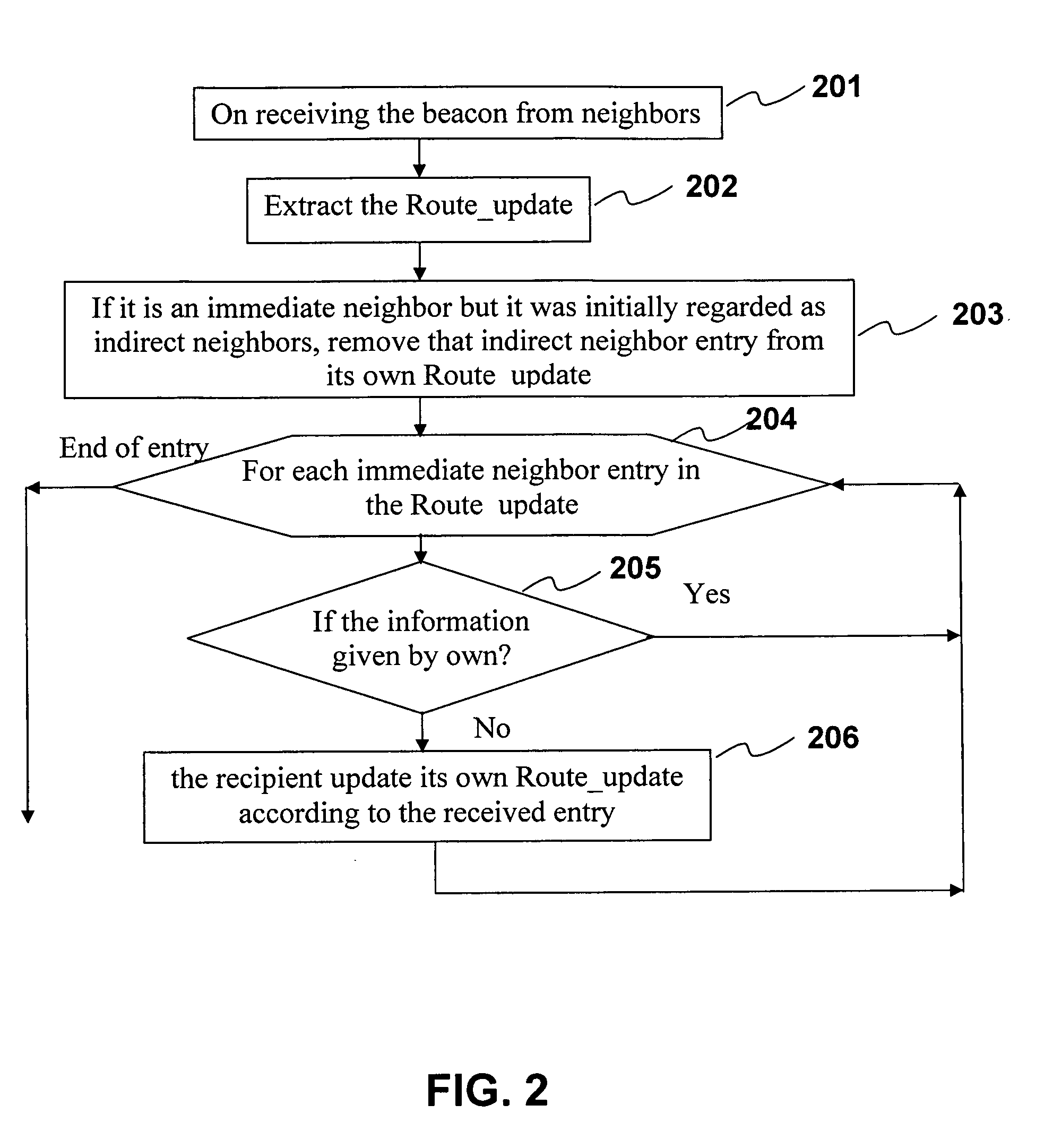Data routing method and device thereof
a data routing and data technology, applied in the field of data communication, can solve the problems of not having prior knowledge of the destination address, aodv method also makes routing problematic for a device, and the routing information is not available at all times, so as to reduce the overhead
- Summary
- Abstract
- Description
- Claims
- Application Information
AI Technical Summary
Benefits of technology
Problems solved by technology
Method used
Image
Examples
Embodiment Construction
[0045]FIG. 1 depicts the layout of a simple representative network. In FIG. 1B, device A 121 is connected to immediate neighbor devices B 123 and C 125. When devices fall within a proximity to one another, they will form a network by communicating with each other. According to the claimed invention, a device will only talk with immediate neighbors, which it is directly connected to, and get to know other indirect neighbors, which a device needs to take more than 1 hop to reach, through these immediate neighbors.
[0046]FIG. 1A shows the timeline of how routing information can be shared among various devices. Devices exchange information with each other through beacons 101, 102, 103 to learn about the existence of all devices in the network, also known to be neighbors, which includes immediate neighbors directly connected with the device and indirect neighbors connected with the device indirectly via other devices. When devices A, B, C are in proximity to each other as immediate neighb...
PUM
 Login to View More
Login to View More Abstract
Description
Claims
Application Information
 Login to View More
Login to View More - R&D
- Intellectual Property
- Life Sciences
- Materials
- Tech Scout
- Unparalleled Data Quality
- Higher Quality Content
- 60% Fewer Hallucinations
Browse by: Latest US Patents, China's latest patents, Technical Efficacy Thesaurus, Application Domain, Technology Topic, Popular Technical Reports.
© 2025 PatSnap. All rights reserved.Legal|Privacy policy|Modern Slavery Act Transparency Statement|Sitemap|About US| Contact US: help@patsnap.com



